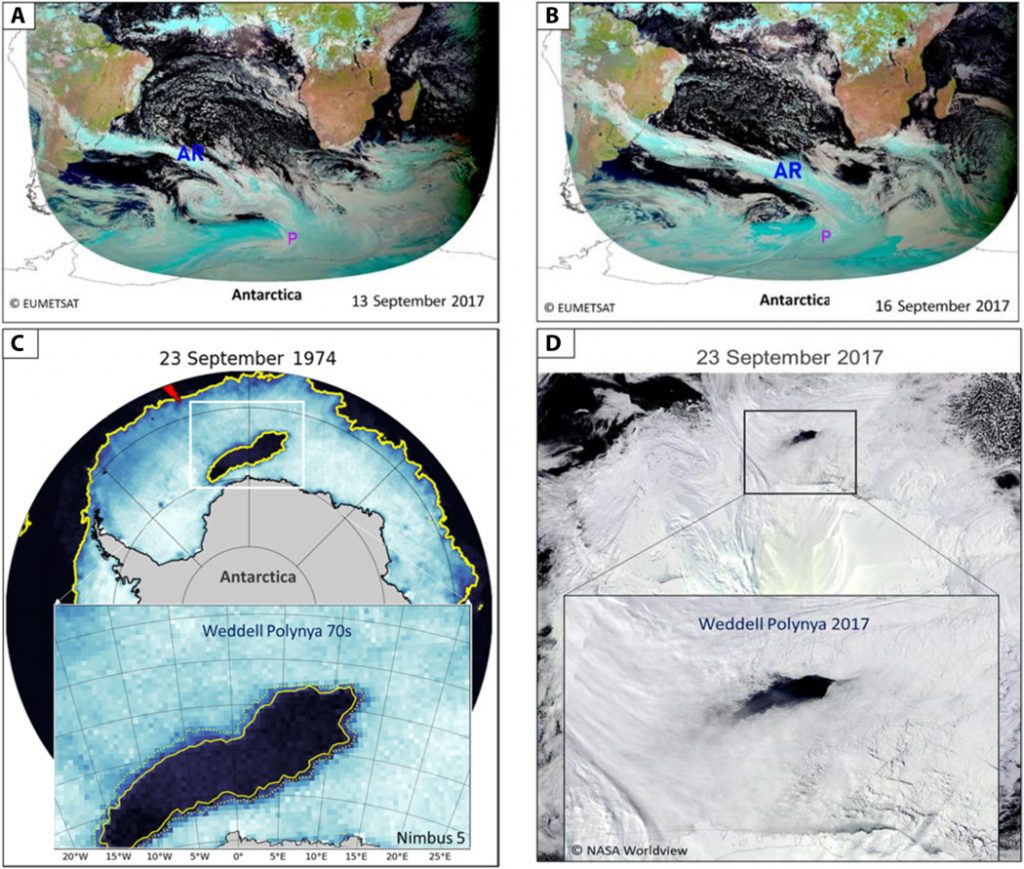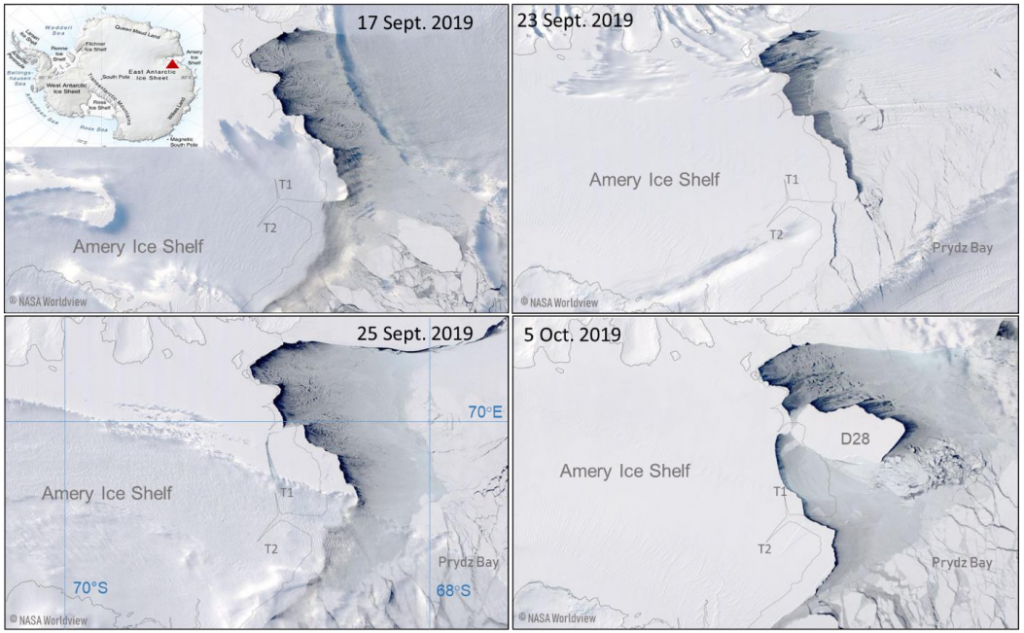Antarctica
Antarctic coupled ocean-atmosphere-cryosphere extremes
Like the Arctic, the Southern Hemisphere high latitudes are home to a major land ice mass and seasonally varying sea ice cover. The Antarctic Ice Sheet is the world’s largest and is buttressed by numerous floating ice shelves, while the sea ice cover of the Southern Ocean changes more dramatically between the winter and summer than in the Arctic. My colleagues and I have been researching the interactions between atmospheric extreme events and these components of the land and ocean cryosphere. We have found that repeated atmospheric river events in 2017 triggered the opening of a rare polynya in an area of the Southern Ocean preconditioned by oceanic conditions in previous years, and that a series of extreme cyclones contributed to the 2019 calving of a massive iceberg from the Amery Ice Shelf through their impact on sea surface slope. Future studies will further examine interactions between ocean-atmosphere coupled extreme events and the Antarctic cryosphere.

From Francis et al. 2020, Science Advances, reproduced under a Creative Commons Attribution NonCommercial License 4.0 (CC BY-NC).

From Francis et al. 2021, The Cryosphere, reproduced under a Creative Commons Attribution NonCommercial License 4.0 (CC BY-NC).
Read more:
- Francis et al., 2020 (Science Advances): On the crucial role of atmospheric rivers in the two major Weddell Polynya events in 1973 and 2017 in Antarctica
- Francis et al., 2021 (The Cryosphere): Atmospheric extremes caused high oceanward sea-surface slope triggering the biggest calving event in more than 50 years at the Amery Ice shelf